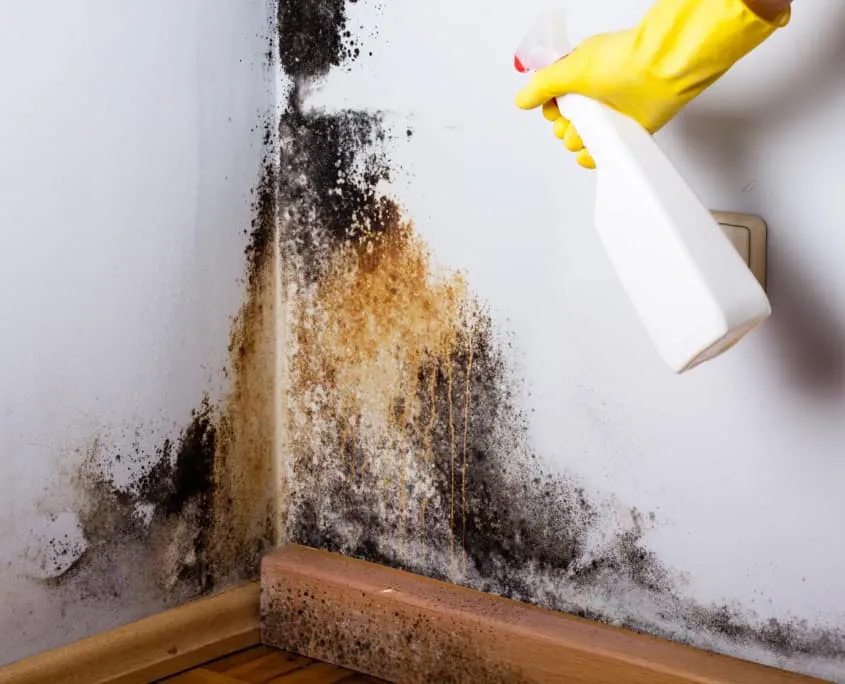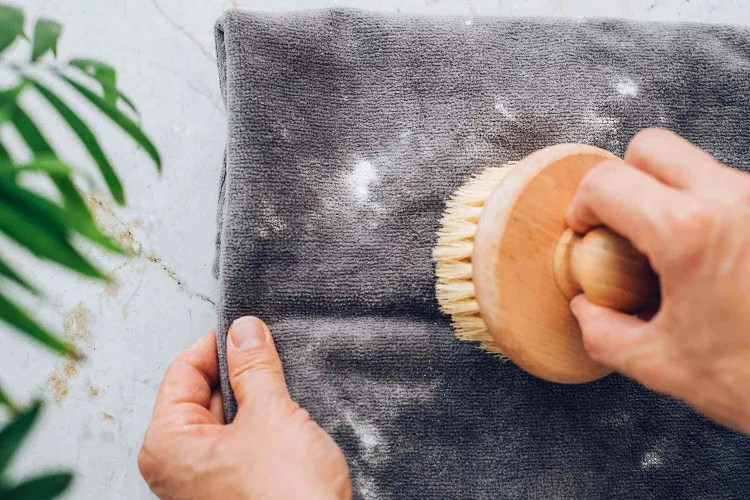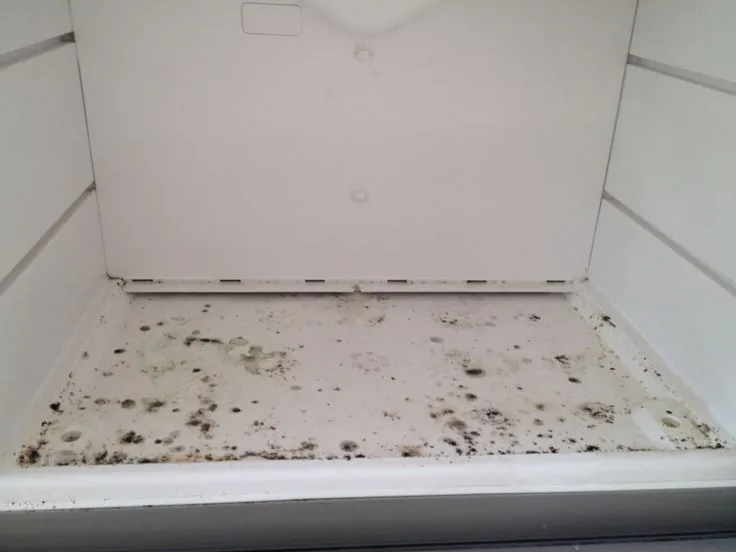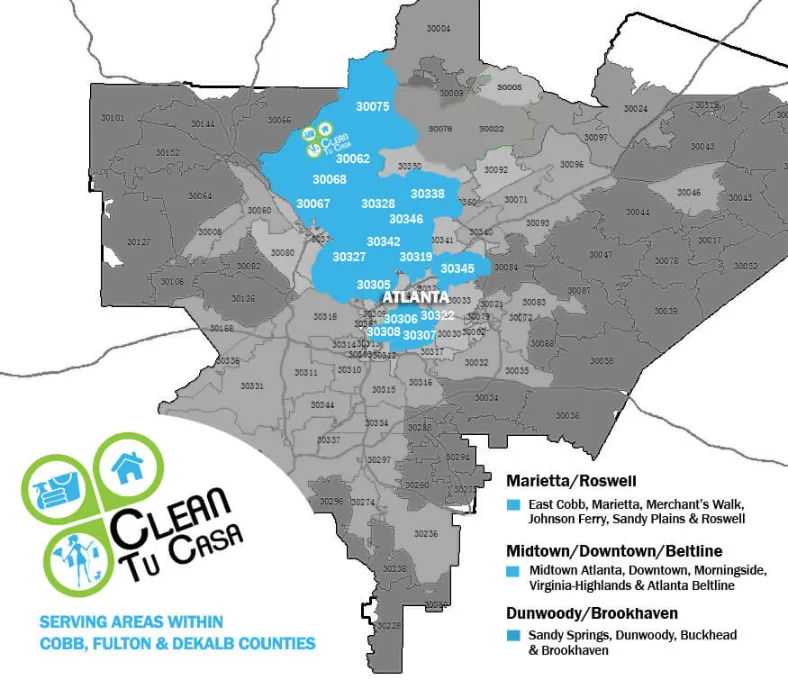Cleaning Tips
Published On
How to Get Rid of Mold from Every Surface in Your Home
Written By
The first sighting of mold in your beautiful home can be frustrating. They can appear so suddenly that you’ve got an immaculate home one day, but the next day, you have to start looking up how to get rid of mold. Mold can cause damage to your property and raise health concerns, so you have t be quick when handling them.
This guide will show you how to get rid of mold from different areas in your home. We’ll start with what you should do first; then, we will list all the materials you should have and finally move on to specific surfaces.
What to do first.
Once you note a musty smell in your home, it is a sign of a high concentration of mold somewhere, and you must immediately find it. According to FEMA, if it is a small mold problem (less than 25 sq. feet), you could handle it yourself. However, a professional mold remediation team should handle mold covering over 25 square feet of your home.
For minor mold/mildew issues, we have listed the best products to handle them.
What are the best products to use?

When dealing with mold, these products are your best bet. Some of them, such as PPE, are even indispensable.
- Chlorine bleach: Destroys mold and removes discoloration. Mix a cup of bleach with a gallon of water and spray directly on the affected surface.
- Hydrogen peroxide: This will kill mold and lighten any stains left by the mold. It is slower in action than bleach.
- Rubbing alcohol: Stops the growth of mold and mildew. Simply mix with water in equal parts.
- Distilled white vinegar: It is acidic and will slowly break down the structure of the mold. However, it may leave the mold stains behind, meaning you might have to do extra cleaning.
- Personal Protective Equipment (PPE): These includes safety glasses, gloves, face mask, and protective clothing. They will protect you from the adverse health effects and mold spores released while cleaning. You cannot do without them.
How to get rid of mold in specific areas in your home
- Shower tiles and grout

The bathroom's limited ventilation and high moisture levels make it the perfect environment for mold growth. One way to take care of mildew in the shower is to add mild white vinegar to a spray bottle without diluting it. Spray the vinegar on the affected surfaces and leave it to sit for about an hour. Proceed to wipe the surfaces with warm water and then dry them with a towel to prevent the mold from growing again.
Alternatively, mix one part bleach with two parts water and put this mixture into a spray bottle. Spray this solution on the affected areas and allow this to dry. After this, spray again and scrub with a soft brush while still wet. Rinse and repeat until the mold is gone. Remember to ensure proper ventilation during these steps by leaving the windows open.
- Shower curtains
The shower curtains are rarely spared during mold infestation but can be easily cleaned, especially if the growth is noticed early. The first step is to carefully remove the shower curtain from the rod to avoid spreading mold spores. Go to an outdoor space and lay the curtain on a flat surface. Spray a solution of two parts hydrogen peroxide and one part water onto the fabric. Allow this to sit for at least 10 minutes, then thoroughly rinse. After rinsing, make a paste from equal parts of baking soda and water. Use this paste to scrub whatever mold is left on the curtain. Rinse and repeat as many times as it takes. Finally, hang the curtain in the sun to dry adequately.
- Walls
It is crucial to tackle the mold on your wall while it is still small because it will spread if left untouched. You will need a stiff-bristled brush, water, rags, and chlorine bleach. Start by making a solution of one part chlorine bleach and two parts water. Apply the solution to the area and use the stiff-bristled brush to scrub. Rinse thoroughly with a cloth and water and leave to dry. This should do the trick. Remember that you can set up dehumidifiers in rooms prone to mold. This will save you a lot of future stress.
- Fabric

Mold can form on damp fabrics left in a bag or enclosed space for a while. You will first want to bring out the clothing items outside and carefully brush off any loose mold. It is essential to avoid spreading mold spores inside your home. Check the instructions on the fabric to see if it is machine-washable and can tolerate bleaching. If machine-washable, use the hottest setting to wash after adding liquid laundry detergent and chlorine or non-chlorine bleach, depending on the wash instructions. On the other hand, if not machine-washable, simply use a soft-bristled brush to dry clean or hand wash after adding some diluted vinegar or bleach directly to the stain.
- Wood
Wooden surfaces are not spared when mold enters the home because wood is very good at absorbing water. Mix one part dishwashing detergent, ten parts bleach, and 20 parts water in a bucket to remove mold on wood surfaces. Apply the mixture to affected areas, and scrub thoroughly using a sponge or soft-bristled brush. Rinse off and repeat until the mold stain is gone. Use a towel to completely dry the surface afterward. If possible, use a dehumidifier in the room where the affected surfaces are to remove moisture and forestall future mold attacks completely.
- Refrigerator

Here is how to get rid of mold growth in your refrigerator. Simply empty the fridge and clean the surfaces with white vinegar and water. Do not use bleach, as it may contaminate your food. Clean as many times as it takes for the sparkling shine of your beloved refrigerator to return. Remember to dispose of any rags or paper towels used to avoid spreading mold spores.
Tips to prevent more mold from growing in your home
The only thing worse than mold now is more mold later. Mold thrives in humid and poorly ventilated areas, so to ensure that the mold doesn’t happen in the first place, here are a few prevention tips:
- Get at least one dehumidifier for your home.
- Open bathroom doors and windows after you shower to let moisture escape.
- Avoid storing linens, books, furniture, or other items in damp rooms.
- If you have tiling, seal bathroom grout lines every year.
- Do not use wall-to-wall carpeting in areas prone to becoming wet or moist such as bathrooms, kitchens, and basements.
- You should vent moisture-generating areas like the bathrooms.
- After showering, always leave the shower curtain spread open to help it dry.
Over to you
With all the tips we’ve listed here, your minor mold problems can be solved easily. However, if the problem is beyond you, it’s best to call professionals to handle it. There are a good number of mold remediation services you can pick from to tackle big issues. Deal with that mold now to protect yourself and your family.
Clean Tu Casa is the team to call for any cleaning service in Atlanta. We offer Atlanta residential cleaning services and corporate cleaning services. We provide commercial cleaning services in Marietta, Buckhead, and Brookhaven areas. Whether you want a one-time, weekly, bi-weekly, or monthly cleaning, simply reach out to us for your free quote today.
